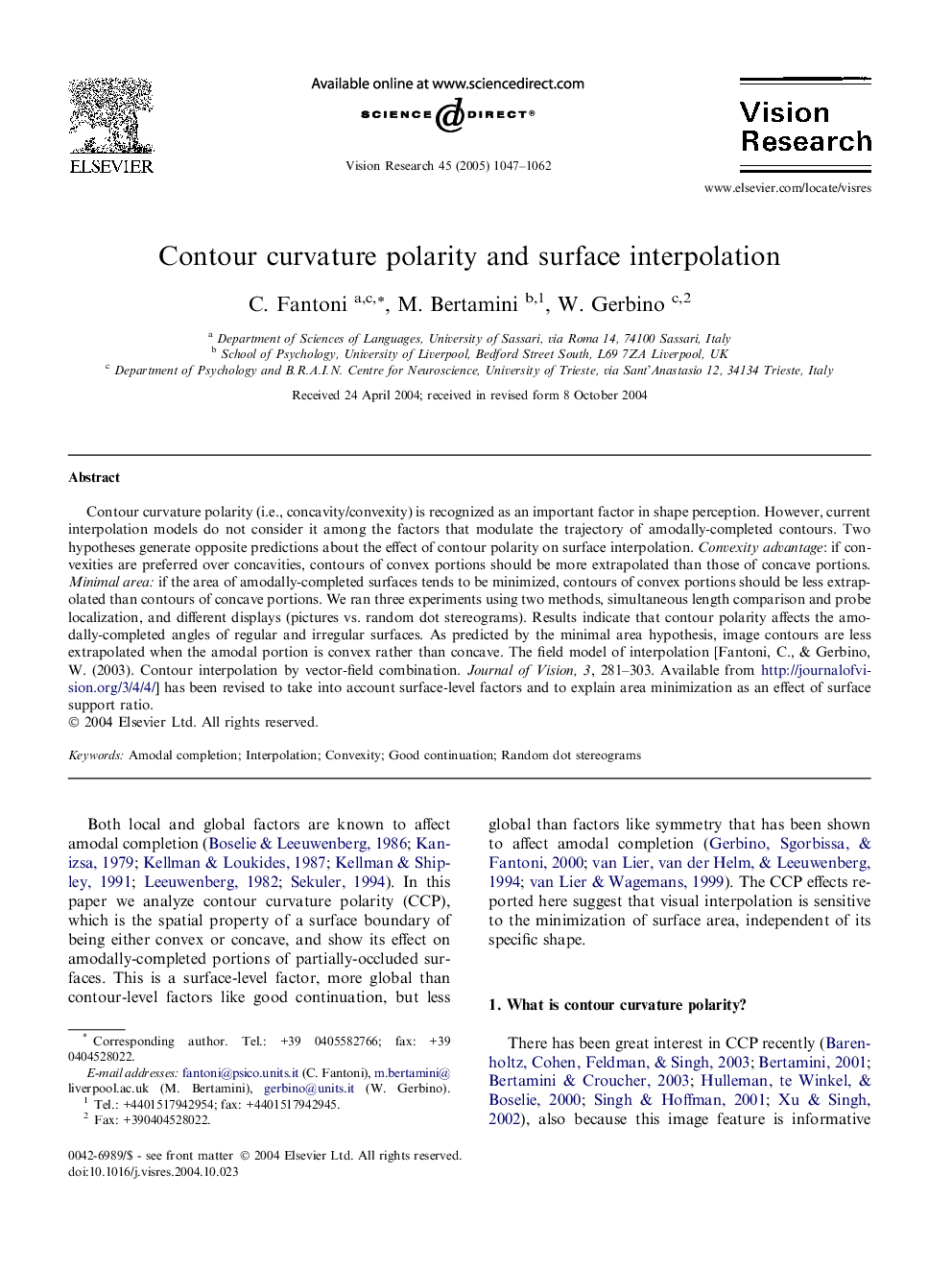| Article ID | Journal | Published Year | Pages | File Type |
|---|---|---|---|---|
| 9348552 | Vision Research | 2005 | 16 Pages |
Abstract
Contour curvature polarity (i.e., concavity/convexity) is recognized as an important factor in shape perception. However, current interpolation models do not consider it among the factors that modulate the trajectory of amodally-completed contours. Two hypotheses generate opposite predictions about the effect of contour polarity on surface interpolation. Convexity advantage: if convexities are preferred over concavities, contours of convex portions should be more extrapolated than those of concave portions. Minimal area: if the area of amodally-completed surfaces tends to be minimized, contours of convex portions should be less extrapolated than contours of concave portions. We ran three experiments using two methods, simultaneous length comparison and probe localization, and different displays (pictures vs. random dot stereograms). Results indicate that contour polarity affects the amodally-completed angles of regular and irregular surfaces. As predicted by the minimal area hypothesis, image contours are less extrapolated when the amodal portion is convex rather than concave. The field model of interpolation [Fantoni, C., & Gerbino, W. (2003). Contour interpolation by vector-field combination. Journal of Vision, 3, 281-303. Available from http://journalofvision.org/3/4/4/] has been revised to take into account surface-level factors and to explain area minimization as an effect of surface support ratio.
Related Topics
Life Sciences
Neuroscience
Sensory Systems
Authors
C. Fantoni, M. Bertamini, W. Gerbino,
